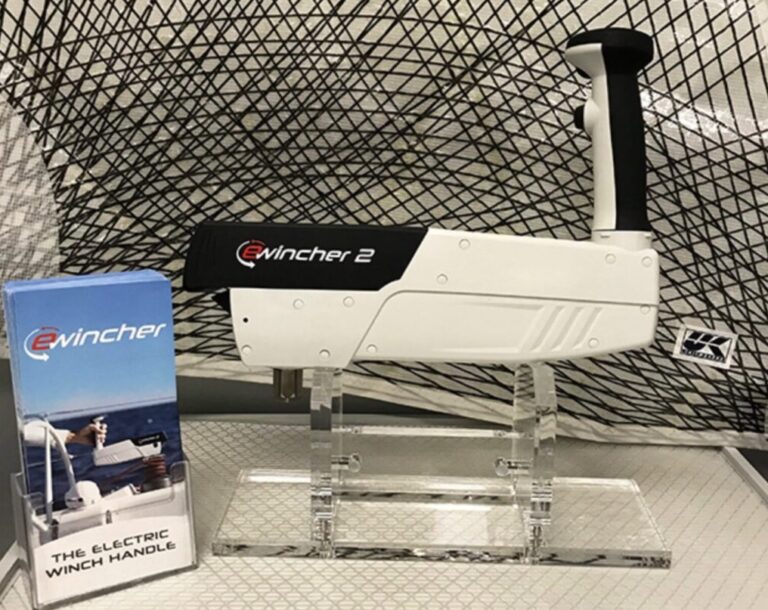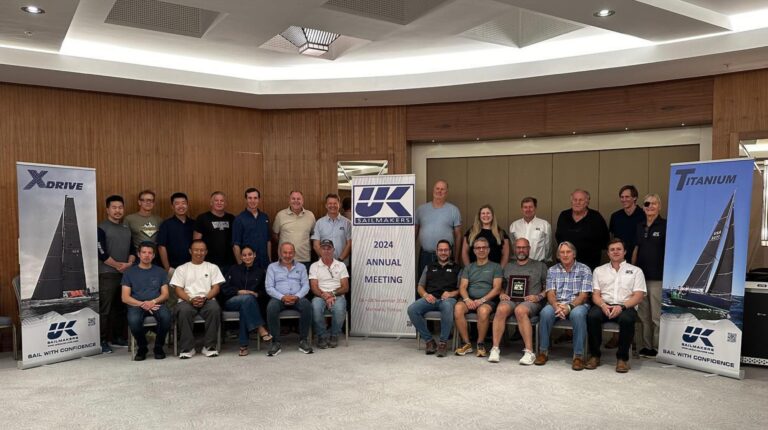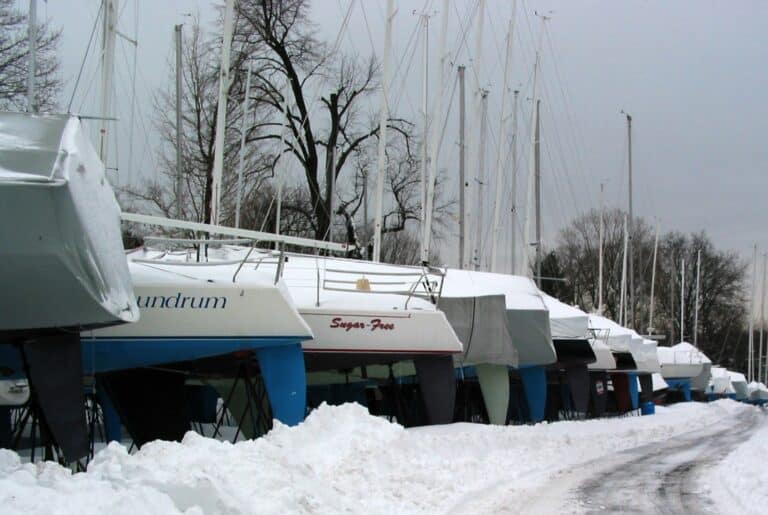In a recent article in Sail Magazine’s Seamanship section, Andy Schell, the President of 59° North Sailing, wrote, “My friend and business partner, Nikki Henderson, likes to say that at sea, risk is ‘inversely proportional to flexibility’ — meaning the more inflexible your plan becomes, the higher the risk you run in executing that plan.” Flexibility is the key to seamanship: staying flexible, whether cruising or racing will always lead to better and safer results. A good corollary comes from the business world, “If you don’t have a backup plan, you don’t have a plan.”
“Good seamanship requires that you learn how to anticipate the future and remove the uncertainty. Great seamanship requires you to admit that a certain future is impossible and to remain flexible,” wrote Schell in his Sail magazine article. To read Schell’s full article, click here.

The Swan 59 ICEBEAR that was the queen of the 59 North Sailing fleet before she was recently sold. She was replaced by the Farr 65 FALKEN.
According to their web site, “59º North Sailing was founded on a simple, strong vision — to explore the world’s oceans & landfalls in safety & style on cool boats and with cool people. 59º North takes people ocean sailing. We’re passionate about following our own dreams and providing both the inspiration and the platform to allow other people who share our vision to follow their dreams, too.
“We love talking about seamanship, are passionate about traditions of the sea, and share our love for the philosophical aspect of ocean sailing with our eclectic crew. There’s much more to THE STORY HERE — but that’s us in a nutshell.”
Now, Andy’s philosophy is being expressed here largely from a cruising and passagemaking perspective, but it applies to both racing and local cruising folks alike. Flexibility breeds success, but flexibility combined with a solid dose of anticipation is unbeatable. In racing, it may be the “what ifs” your brain thinks through regarding ducking a starboard tacker or where to find your hole approaching a windward mark from the port layline. Or, it could be figuring out the wind and current changes expected many hours or days ahead in a distance race.
One famous story of a strategy session that went on a little too long was on the Express 37 LORA ANN during a 240-mile Stamford Vineyard Race. Boat owner Richard du Moulin and his tactician Steve Moore went back and forth for 30 minutes or more trying to figure out their moves many hours down the track. Finally, when Steve wanted to cut the conversation off, he answered du Moulin’s final question of, “What do you think will happen when the sun goes down?” with a dismissive, “It will get dark.”
Cruisers, on the other hand, have different factors to face to stay safe. In their book PACIFC CROSSING NOTES, Nadine Slavinski and Markus Schweitzer wrote, “It’s important to remember that cruising is a special kind of sailing. If racing is about being in the right place at the right time, cruising is about not being in the wrong place at the wrong time. Given forethought and a conservative approach, it’s usually possible to avoid that wrong place and time. With a sturdy boat and a good seamanship, you can go a long way toward keeping ‘luck’ on your side.”
Flexibility also creates “invention,” and being able to invent a solution often can be the most fun aspect of sailing. You made that duck and came up under his stern at full speed. Or you found a quiet lagoon where you could drop the hook for the night and feast on some of the back-up food supplies in your cupboard.
Even if all the ducks fall into a row during your race or on your overnight, let your mind wonder a bit and play the “what if” game. Then, consider how flexible you’d have to be in each situation, what outcomes you would invent, and end the sailing day with a smile on your face. And, if someone asks why you’re smiling so broadly, tell them it’s because you’re practicing the flexibility of your smile.
Editor’s note: When I sailed from Fremantle, Western Australia to the Mediterranean after the 1987 America’s Cup, the owners had a great answer to questions about their schedule. Whenever they were asked about their plans, their answer was, “Our plans are cast in Jell-O,” which agrees with Andy Schell’s point above. – Adam Loory





